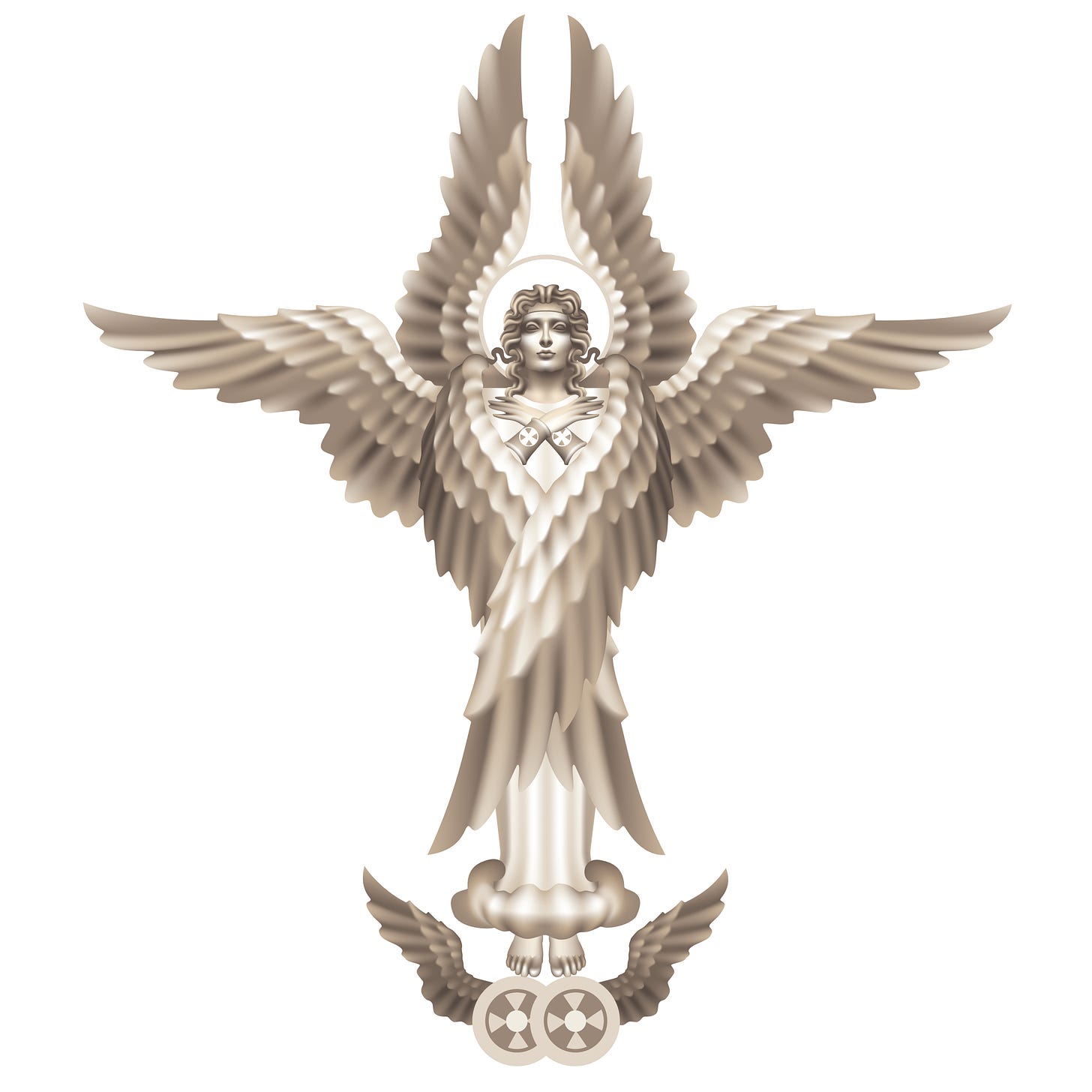A Chorus of Angels - Seraphim
Part 1 of Nightmau Now's exclusive 9 part series on Biblical Angels.
“Above Him stood seraphim, each having six wings: With two wings they covered their faces, with two they covered their feet, and with two they were flying. And they were calling out to one another:
‘Holy, holy, holy is the LORD of Hosts;
all the earth is full of His glory.’
At the sound of their voices the doorposts and thresholds shook, and the temple was filled with smoke” (NIV, Isaiah, 6:2-4)
Overview
Most people, both religious and irreligious, think of angels only as the typical humans with wings with only one type. However, this is not the case as there are at least nine ranks of angels per the Catholic Canon. Seraphim are the first order of angels in the highest choir of the angelic hierarchy. These angels fulfill the role of caretakers of God’s throne, continuously singing His praises. The only direct reference to Seraphim in the Bible takes place in Isaiah chapter 6, in which Isaiah describes the Seraphim alongside other choirs of angels when he has a vision of God’s Throne. They are also referenced in the Book of Revelation in chapter 4 where John describes them as beasts with six wings and full of eyes within.
Descriptions of these angels usually center around their six wings, as it is their defining feature over other angels. There are differing depictions of what the wings cover, whether it be a giant eye, several eyes, a human form or a many-colored fire. While not as strange as the Ophanim, the Seraphim are usually fairly easy to pick out of a lineup of the nine choirs of angels. They do not usually interact with humans. One exception is when Isaiah is speaking with God, he states that he has sinned, and a Seraph brings a hot coal to put in his mouth to cleanse him of sin.
The act of cleansing through a hot coal is fitting as “Saraph” in Hebrew means “burning.” However, interestingly enough it also means “snake.” Why this is the case is not agreed upon, but this means through a direct translation, Seraphim could literally be dragons (snakes that spew fire and fly with six wings). This is the suggestion in the Book of Enoch, but since it is not considered part of the Catholic Canon, it is generally not cited as definitive proof of such a form.
This dragon form would be in conflict with Isaiah’s vision, as he saw Seraphim to be generally similar to humans in body shape. However, this could simply be one of their forms as there are some suggestions that Seraphim can shape change so as to not frighten humans if they appear to them, similarly to other angels. Michael the Archangel could be an example of this as he is referenced to be a “princely Seraph,” and the theologian St. Bonaventure considered Michael to be the literal Prince of the Seraphim. However, St. Thomas Aquinas disagrees and argues Michael is the leader of the last choir, the Angels.
Perspective Through Judaism
In Judaism, the theologian Maimonides ranked Seraphim as the fifth of ten ranks of angels when he published his work on the Jewish angelic hierarchy. In this hierarchy, Seraphim are below the Chayot Ha Kadesh, Ophanim, Erelim and Hasmallim, all of which (except Ophanim) are not present in Christian tradition. However, other Jewish scholars disagree, including Zohar and Reshit Chochmah ranking Seraphim third, Maseket Atzilut ranking Seraphim first and Berit Menuchah ranking Seraphim tenth.
Regardless of rankings, the description from Isaiah still holds with the six wings and their role as caretakers of the Throne of God. In addition, in the Tanakh, the only angels that are described as having wings are the Seraphim, and the Seraphim specifically seem to be responsible for ensuring prophets are “cleansed” prior to holding an audience with God (This includes cases such as Isaiah and Joshua, although with Joshua it is not confirmed to be a Seraph).
Perspective Through Christianity
In Christianity, there is general agreement that Seraphim are the highest rank of angel and are the most closely associated with fire out of all the angels. The theologian Psuedo-Dionysius the Areopagite in his Celestial Hierarchy argues the Seraphim are directly responsible for helping God maintain perfect order in Heaven and are not regulated to chanting the Trisagion. In addition, the scholar Origen stated in On First Principles that Seraphim are the physical representation of Jesus Christ and the Holy Spirit in the Old Testament. In response to this claim from Origen, the Catholic Church labeled him a heretic, even though his ideas were reflected in early Christian literature and belief.
St. Thomas Aquinas offered the most widely accepted view of Seraphim in his Summa Theologiae and draws upon the works of Psuedo-Dionysius to argue that Seraphim adhere to three main qualities of fire. First, they are inextricably borne to God and move upwards continuously, such as a flame does. Second, Seraphim are able to spread to even the smallest of beings and cleanse their hearts of sin. Third, they are bright and clear as they are perfect and perfectly enlighten others. This description from Aquinas cemented the idea that Seraphim are inextricably linked to fire and are a divine representation of fire itself.
Perspective Through Islam
In Islam, there is less information regarding Seraphim, but what does exist seems to line up with Judeo-Christian teachings on the beings. For example, Seraphim are also the bearers of the Throne of God and reside solely in Heaven. They are the highest rank of angel and are referenced as the “exalted assembly” in a hadith from Al-Tirmidhi, which dealt with a conversation between Muhammad and God.
Interestingly enough, there are some suggestions that, similarly to Micheal, some of the Archangels in the Muslim Canon are referenced as Seraphim, such as Jibra’il, Ibris and Israfil. They are also occasionally referenced as Cherubim as well, so this conclusion is not airtight and ought to be taken with a grain of salt.
To Wrap Up
Clearly, there is a bit more to angels than just humans with wings in all of the Abrahamic religions. Specifically, Seraphim are a fascinating subgroup of angels that, while having scant mention in biblical canon, have nevertheless captured the interest of both scholars and popular culture. Several instances of angels with six wings and either a human body or a large eye exist in popular culture, such as Galeem from Super Smash Bros. Ultimate. While maybe not the most outlandish of the nine ranks of Angels in the Catholic Canon (Ophanim have that designation), they are without a doubt, one of the more interesting and memorable types.





